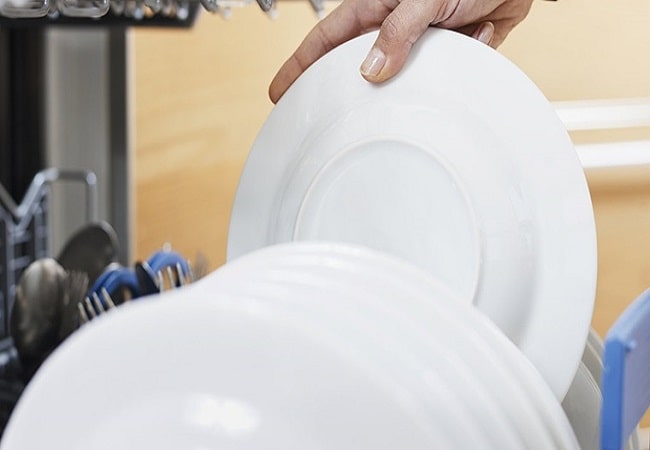Cheese is a versatile ingredient that can use in various dishes. It is eaten alone or used to add flavor and texture to a dish. Cheese is bought pre-grated, or you can grate it yourself using a cheese grater. But can you grate cheese in a food processor? The short answer is yes, you can grate cheese in a food processor, but there are a few things to keep in mind.
This blog post will discuss how to grate cheese in a food processor and the best type of cheese to use.
Contents
Is grating cheese using a food processor possible?
Are you looking for an easy way to grate cheese? If so, you may wonder if you can grate cheese in a food processor. The answer is yes – you can grate cheese in a food processor. However, there are a few things to keep in mind.
- First of all, not all food processors are created equal. Some processors have bigger grating blades than others. So, if you have a smaller food processor, you may want to stick with softer cheeses, such as mozzarella or cheddar.
- Secondly, always use the pulse button when grating cheese in a food processor. This will help avoid over-processing the cheese, leading to a sticky mess.
- Finally, be sure to clean your food processor immediately after grating cheese.
What are the benefits of grating cheese in a food processor?
Grating cheese is a quick and easy way to add flavor and texture to your dishes. Grated cheese is used in sauces, salads, pasta, etc. There are several benefits of grating cheese in a food processor.
- First, grating cheese in a food processor is fast and easy. You can quickly grate a large amount of cheese in just a few minutes.
- Second, grated cheese is more evenly distributed in your dish. This gives your dish a more consistent flavor and texture.
- Third, grated cheese melts faster and better than chopped or shredded cheese.
- Fourth, grated cheese is less likely to clump together than chopped or shredded cheese.
- Fifth, food processors come with several different grating options to choose the right size for your recipe.
How to grate cheese in a food processor?
What You’ll Need
- A food processor.
- Cheese of your choice.
- A cutting board.
- A sharp knife.
Step 1: Cut the cheese into small cubes or slices.
Step 2: Place the cheese in the bowl of a food processor.
Step 3: Pulse the cheese several times until it is evenly grated.
Step 4: Store any leftover grated cheese in an airtight container in the fridge.
How much cheese should you grate in a food processor?
For most recipes, you will need about 1/2 cup of grated cheese. If the recipe calls for more or less cheese, adjust the amount accordingly.
When grating cheese, be careful not to grate your fingers! Always use a sharp knife to cut the cheese into thin strips before grating it.
How long do you use a food processor to grate cheese?
Most people believe that if they have a food processor, they can quickly and easily grate cheese. But how long should you run the processor?
Some food processors have different grating blades, but all will work similarly. The best way to use the processor is to put the chunk of cheese in the top chute and turn it on. Hold the cheese down with your fingers as it goes through. Be careful not to touch the grater as it will be very sharp.
You need to run the processor for about 10 seconds for harder cheeses like Parmesan or Romano. For softer cheeses like cheddar or American, 5 seconds should be enough.
Is it necessary to slice the cheese before putting it in the food processor?
If you’re looking to save time in the kitchen, the answer is yes – you should slice the cheese before putting it in the food processor. You’ll avoid stopping and cleaning the machine before making your cheese sauce or dip.
Another reason to slice the cheese is that it will be chopped more evenly, which means your final dish will look nicer.
How to store grated cheese?
The best way to store grated cheese is by placing it in a sealed container and keeping it in the fridge. You can freeze grated cheese, but it will lose its flavor over time. Grated cheese is a great way to add flavor to dishes and is easy to prepare. Just make sure you have a good storage container to stay fresh.
Frequently asked question
Can you grate cheese without a cheese grater?
Yes, you can grate cheese without a cheese grater. All you need is a cutting board and a sharp knife.
Place the cheese on the cutting board and use the knife to grate it. Be sure to hold the cheese down with your other hand, so it doesn’t move around.
It may take a little longer to grate the cheese this way, but it’s doable.
How do I keep the cheese from sticking to my food processor?
One of the most frustrating things in the kitchen is when your cheese sticks to the food processor. However, this problem is easily avoided by taking a few simple steps.
- First, ensure the food processor is clean and dry before starting.
- Next, add a small amount of oil to the work bowl and spread it around with a spatula.
- Then, add the cheese and pulse until it’s broken into small pieces.
- Finally, stop the machine and scrape down the sides of the bowl with a rubber spatula. Your cheese will come right off without sticking to anything if you follow these tips!
How do you shred soft cheese in a food processor?
There are many different ways to use food processors when it comes to food processors. One of the most popular methods is to shred soft cheese. Here is a simple guide on how to do it:
1. Start by cutting the cheese into small pieces. This will make it easier to process and help reduce the likelihood of clogging up the machine.
2. Place the cheese in the food processor and turn it on. Be careful not to overload the processor, or it may not work properly.
3. Let the machine run for a few minutes until the cheese is shredded to your desired consistency. If needed, you can occasionally stop to stir the cheese to shred it evenly.
Can I shred frozen cheese in a food processor?
The answer to this question is yes. You can shred frozen cheese in a food processor. However, keeping a few things in mind would be best.
- First, ensure the cheese is properly thawed before putting it in the food processor. If it is still partially frozen, it could damage the blades or motor of the machine.
- Second, always use caution when using a food processor, as they are dangerous if not used properly.
- Finally, clean the food processor thoroughly after using it to shred cheese, as any leftover cheese will likely spoil and create a mess.
Can I grate cheese in a blender?
Some blenders have grating attachments that are used to grate cheese. If your blender does not have a grating attachment, you can still grate the cheese using a food processor or by hand.
To grate the cheese by hand, use a sharp knife to cut the cheese into small pieces. Then, use a grater to shred the cheese into thin strips.
Can you use a mandoline to grate cheese?
Yes, you can use a mandoline to grate cheese. The small holes on the grater make it easy to get the cheese into small pieces, perfect for toppings or adding to recipes. Grated cheese is also a great way to add flavor and texture to dishes.
Conclusion
In conclusion, it is possible to grate cheese in a food processor. However, it is to note that not all food processors are created equal. Some are better equipped to handle harder cheeses, while others are better suited for softer cheeses. It is always good to read the manufacturer’s instructions before using a food processor to grate cheese.





Leave a Reply